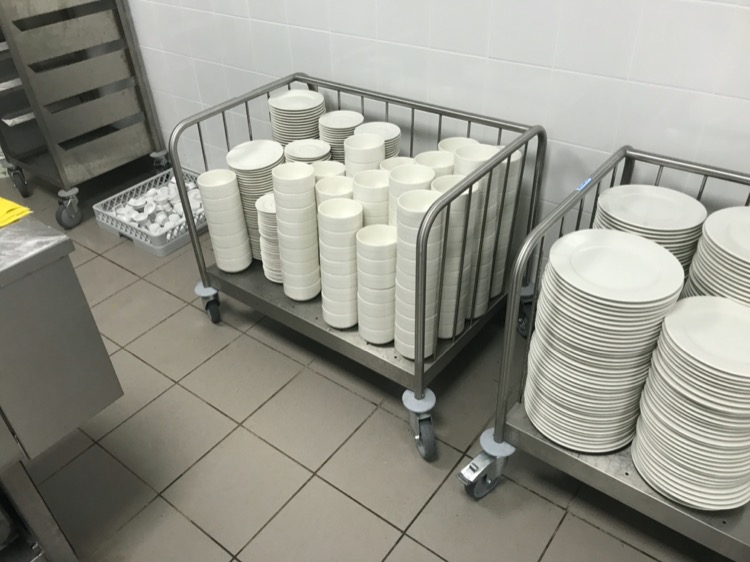Stack breakage
What is stack breakage of ceramic articles?

Stack breakage of porcelain occurs when edges, shelves, mirrors or surfaces of an article break, chip, flake or crack and the cause is to be found in an improper physical load on the respective piece of crockery. The breakage of the item occurs during, in, during or after the stacking process. In principle, stack breakage does not belong to the group of manufacturing defects but is the result of an incorrect or excessive weight load. The degree of damage, time and effect of a stack breakage can be reduced or increased by various factors.
Stack breakage due to mechanical load

The so-called "stack breakage", i.e. the breaking of porcelain during, during or even after stacking, is often disputed between users and manufacturers. However, it is undisputed that stack breakage only occurs when the item itself and its use interact. It is therefore appropriate to critically assess each of these two factors that lead to stack breakage. Strength and resistance is not an obvious criterion and, above all, is not subject to obvious standards. Biology teaches us that the strongest animal in the world is the ant and not the elephant. An ant can carry a hundred times its own weight, an elephant cannot. Accordingly, it is not mass and size that should be used for a load rating, but the proportional value.
It is true that hotel porcelain and catering tableware are much more resistant to mechanical stress - i.e. mechanical pressure - than conventional household porcelain. However, even hotel porcelain is not infinitely resilient. Especially if the mechanical pressure is increased by vibrations or thermal load. The main causes of stack breakage are usually
-
Stacking crockery items that are not labelled as stackable
-
Stacking of unequal articles with different pressure load points, e.g. different plate sizes
-
Stacking that is too high and exerts too much pressure on the porcelain, e.g. with heavy porcelain plates
-
Crockery stacked at an angle or crookedly
-
Hot stacked crockery directly, e.g. directly after the drying process in the dishwasher
-
Shaking of the porcelain during transport (crush fracture), e.g. in stacks of crockery when crossing door and lift thresholds
The many decades of our practice have taught us that a combination of the above factors in particular can have a destructive effect on the porcelain. In 8 out of 10 cases, we know that stack breakage only occurs when two of the above criteria act together on the porcelain.
In many places, porcelain is stacked almost thoughtlessly and carelessly, and an item is often loaded with 20 to 50 times its own weight. A stack of 20 pizza plates, for example, already weighs 26 to 30 kg.
We therefore recommend that all users check the support and contact points of the porcelain to be stacked for themselves, check the stability of the goods themselves and also include the type of transport and mobile equipment in the assessment. Each business should therefore define its own individual stacking rules for each individual piece of porcelain and crockery in the scullery.
In principle, stack breakage does not constitute a defect in the porcelain itself. However, whether a stack breakage is due to a faulty design of the body depends on the manufacturer's precise description of the warranted utilisation properties. Catalogue liability applies here. However, the warranted property of stackability is neither standardised nor can it introduce improper breakage risks. The standard industry description of intended use applies.
In our "Buy and use" section, we have prepared helpful explanations and application notes for you on how to avoid broken stacks.
